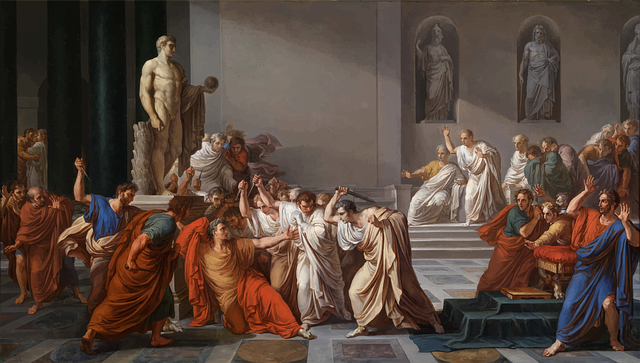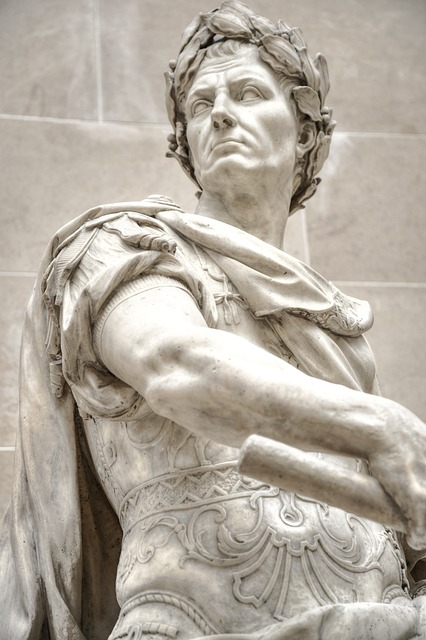The Fall of Rome has been a subject of fascination for centuries, with many speculating on the factors that led to its decline. What can the fall of this once-great empire teach us about the dangers of corruption, overexpansion, and internal strife? In this blog post, we will delve into the complex tapestry of events that contributed to Rome’s decline, from political turmoil and economic struggles to military challenges and the rise of Christianity.
Key Takeaways
- The fall of the Roman Empire was caused by key events such as economic struggles, political turmoil and military challenges.
- Barbarian invasions, government corruption and Christianity’s influence were major factors in its decline.
- The legacy of Rome lives on through engineering innovations, art & architecture, legal systems and values.
The Gradual Decline: A Timeline

The Roman Empire’s decline was not an overnight event, but rather a gradual process marked by key events that weakened its foundations. The Crisis of the Third Century, the division of the empire, and the influx of barbarian tribes each played a part in eroding Rome’s power.
Through an examination of these events in Roman history, we can understand how the mighty Roman Empire began its gradual decline, leading to its ultimate collapse.
Crisis of the Third Century
The Crisis of the Third Century (235-284 CE) was a period of significant disruptions in the Roman Empire, including:
- Political instability
- Economic decline
- Military challenges
- Pandemics, such as the Antonine Plague and Plague of Cyprian, leading to mass mortality and hindering efforts to repel Germanic invaders.
This crisis saw the rise of the powerful Sassanid Empire, which inflicted devastating defeats on Roman field armies and remained a formidable menace for centuries, further weakening the Western Empire. Amidst this chaos, power-hungry individuals such as Theoderic II and Avitus, like many Roman emperors before them, sought to seize control, plunging the empire into a cycle of political instability and strife.
Division of the Empire
The division of the Roman Empire into Eastern and Western halves was an attempt to address the challenges of governing its vast territory. Emperor Diocletian divided the empire in 285 CE, creating two distinct political entities, each ruled by its own emperor, including a western Roman emperor. This division led to a shift in power and resources, with the Eastern Roman Empire, later known as the Byzantine Empire, becoming the economic and cultural center.
As the eastern half prospered, the western empire suffered, with its military strength focused more on Constantinople than the vulnerable western borders of Western Europe. As the Western Roman Empire’s power waned, it became increasingly susceptible to barbarian invasions. In AD 455, Vandals sacked the western empire, and by AD 476, the Western Roman Empire came to an end.
The division of the empire not only shifted resources and power, but also exposed the Western Roman Empire to the dangers that would ultimately contribute to its downfall.
Barbarian Influx and Migration Period
The Barbarian Influx and Migration Period saw Germanic tribes migrate into the Roman Empire from the late fourth century to the sixth century. These migrations further destabilized the western empire, as tribes such as:
- Visigoths
- Vandals
- Angles
- Saxons
carved out territories within the empire’s borders. The loss of crucial regions like Spain, Britain, and parts of Gaul to these tribes significantly reduced the empire’s revenue, leaving it unable to support a large enough army to defend its borders.
The barbarian invasions and sackings of Roman cities contributed to the decline and eventual fall of the western empire. As the Roman Empire struggled to protect its borders, its power and influence waned, setting the stage for the end of an era in the ancient world.
The Role of Economic Struggles

Economic struggles played a significant role in the decline of the Roman Empire. Some of the key factors contributing to the empire’s economic decline were:
- Currency devaluation
- Inflation
- Taxation
- Overspending on military campaigns
- Overspending on public works
- Overspending on luxury goods
These financial crises and excessive spending weakened the empire’s economic foundation.
We will now delve into the consequences of these economic challenges on Rome’s decline and their contribution to its collapse.
Financial Crisis and Overspending
Rome faced a financial crisis due to its excessive expenditure on military campaigns, public works, and luxury goods. This overspending led to increased taxation, which in turn had a negative effect on industry. As a result, Rome fell.
As the empire expanded, its reliance on a steady supply of slaves and spoils of war became increasingly unsustainable, leading to a shortage of labor and further economic decline. The financial crisis and overspending not only weakened the Roman economy, but also strained the empire’s ability to maintain its vast territory and protect its borders, leaving it vulnerable to external threats.
Disruption of Trade and Commerce
Trade and commerce were vital to the Roman economy, but they were severely disrupted by factors such as:
- Piracy
- Barbarian invasions
- The Vandals, who claimed North Africa, began interfering with the empire’s commerce by sailing the Mediterranean as privateers
- The decline of land ownership and agriculture as a source of wealth had a deleterious effect on the Roman economy, diminishing the wealth available to the Roman state and its citizens.
The disruption of trade and commerce further weakened the Roman economy, resulting in a decrease in revenue and an increase in poverty, ultimately contributing to the decline of the empire.
Political Turmoil and Instability
Political turmoil and instability were instrumental in the fall of Rome, with government corruption and civil wars undermining the empire’s stability.
We will now analyze the role of corruption, usurpers, and civil wars in the decline of the Roman Empire and their eventual culmination in the empire’s collapse.
Government Corruption
Corruption within the Roman government was a significant factor in the decline of the empire. Some examples of corruption include:
- Bribery
- Fraudulence
- Nepotism
- Embezzlement
These corrupt practices were rampant, resulting in a lack of confidence in the Senate and a decline in civic pride. As wealthy individuals purchased votes and privileges, the government was further weakened, contributing to the decline of the Roman Empire.
This corruption not only weakened the government, but also eroded the trust of the Roman citizens, leading to a decline in civic pride and faith in their leadership.
Usurpers and Civil Wars
Usurpers and civil wars further contributed to the decline of the Roman Empire. Some of the effects of usurpation and civil wars include:
- Rival groups fighting for power, leading to civil wars
- Weakening of the empire and making it more vulnerable to external dangers
- Interference with trade and commerce, resulting in financial distress
- Excessive expenditure, further exacerbating the decline
As the Roman Empire weakened from within, it became increasingly susceptible to external threats that would ultimately contribute to its downfall.
Military Challenges and Foreign Threats

Military challenges and foreign threats played a crucial role in the fall of Rome. The main factors contributing to the fall of Rome were:
- The weakening of the Roman legions
- Barbarian invasions
- Significant damage to the empire
- Vulnerability to attack
We will now study the military challenges Rome faced and the role of foreign threats in its decline.
Weakening of the Roman Legions
The Roman legions, a crucial part of the Roman army, were once a formidable force, but they weakened over time due to several factors.
- Shortage of soldiers
- Reliance on foreign mercenaries
- Lack of allegiance from foreign mercenaries
- Revolts by foreign mercenaries’ leaders against their Roman employers
- Failure to ‘Romanize’ new recruits
- Undermining of the traditional military aristocracy
These factors left the empire vulnerable to attack.
The weakening of the Roman legions left the empire exposed to external threats, ultimately contributing to its decline.
Barbarian Invasions and Sackings
Barbarian invasions and sackings of Roman cities significantly contributed to the decline and eventual fall of the western empire. Tribes such as:
- the Goths
- Vandals
- Burgundians
- Gepidae
Invading and pillaging Roman territories, further weakening the empire. The most notable example of the devastating impact of these invasions was the sack of Rome in 410 AD.
As the Roman Empire struggled to defend itself against these external threats, its power and influence waned, culminating in the end of an era in the ancient world, marked by the decline of the last Roman Emperor and the moment when the Western Roman Empire fell.
Christianity’s Impact on the Roman Empire
The rise of Christianity played a role in the decline of the Roman Empire. As Christianity grew in influence, it impacted traditional Roman values and governance, contributing to the empire’s decline. We will now consider the influence of Christianity on the Roman Empire and its role in the empire’s downfall.
Christianity was legalized by Constantine the Great, who declared tolerance for the religion and made it the official state religion of the empire. As Christianity became more influential, disputes within the religion may have contributed to the decline of the empire. Additionally, popes and other religious authorities assumed greater responsibility in political matters, further complicating governance.
While most scholars now argue that Christianity’s influence was negligible compared to military, economic, and administrative factors, its impact on traditional Roman values and governance cannot be overlooked.
The Eastern Empire’s Ascendance
The ascendance of the Eastern Roman Empire, later known as the Byzantine Empire, further contributed to the decline of the Western Roman Empire. The Eastern Empire prospered while the Western Empire faced economic crisis and barbarian invasions.
We will now investigate how the ascendance of the Eastern Empire facilitated the decline of the Western Roman Empire. The Eastern Roman Empire, with its more cohesive society, robust tax base, and strategic location, was able to withstand the challenges that brought down the Western Roman Empire. The Eastern Empire’s strength diverted barbarian invasions to the West, further weakening the Western Roman Empire. The Eastern Empire persisted for another millennium before being conquered by the Ottoman Empire in the 15th century.
The Legacy of Rome
The Roman Empire may have fallen, but its legacy continues to influence modern culture, politics, and society. Rome’s innovations in engineering, such as:
- roads
- buildings
- arches
- aqueducts
The influence of Roman civilization remains evident today, not only in art and architecture, but also in the foundations of Roman law. Roman culture was based on values of strength, loyalty, and practicality, and their art, architecture, writing, and legal systems mirrored those ideals.
The fall of the Roman Empire serves as a cautionary tale of the dangers of corruption, overexpansion, and internal strife. It reminds us that even the most powerful empires can fall, and that the lessons of history should not be forgotten. The Roman Empire may be gone, but its influence on today’s world remains a testament to its lasting impact.
Summary
The fall of the Roman Empire was a complex process marked by political, military, economic, and religious factors. From the Crisis of the Third Century and the division of the empire to the rise of Christianity and the ascendance of the Eastern Roman Empire, the gradual decline of Rome ultimately led to its fall. The legacy of Rome remains evident in modern society, with its innovations and values still influencing contemporary culture, politics, and society. As we remember the rise and fall of this once-great empire, we are reminded of the importance of learning from history to better understand our present and shape our future.
Frequently Asked Questions
What caused the downfall of Rome?
The fall of Rome was the result of a combination of economic, social, and political problems, including government and economic corruption, financial crisis, oppressive taxation, inflation, and invasion by Germanic tribes.
These all ultimately led to the loss of central political control in the Western Roman Empire.
When did Rome fall and why?
In 476 C.E., the Western Roman Empire was overthrown by the Germanic leader Odoacer, marking the end of the thousand years of order Rome had brought to western Europe.
Romulus Augustulus, the last emperor of Rome, was deposed and Odoacer became the first barbarian ruler in Rome.
What happened to Romans after Rome fell?
The Western Roman Empire fell, resulting in the loss of central political control.
This led to the emergence of the strong Byzantine Empire in the East and the gradual peopling of the West with various German tribes.
How did economic struggles contribute to the decline of the Roman Empire?
The Roman Empire’s financial crises, including currency devaluation, inflation, and taxation, coupled with excessive spending on military campaigns, public works, and luxury goods, weakened its economic foundation and ultimately led to its decline.
What role did Christianity play in the decline of the Roman Empire?
Christianity had a significant role in the decline of the Roman Empire, weakening traditional values and governance, which ultimately led to its downfall.
